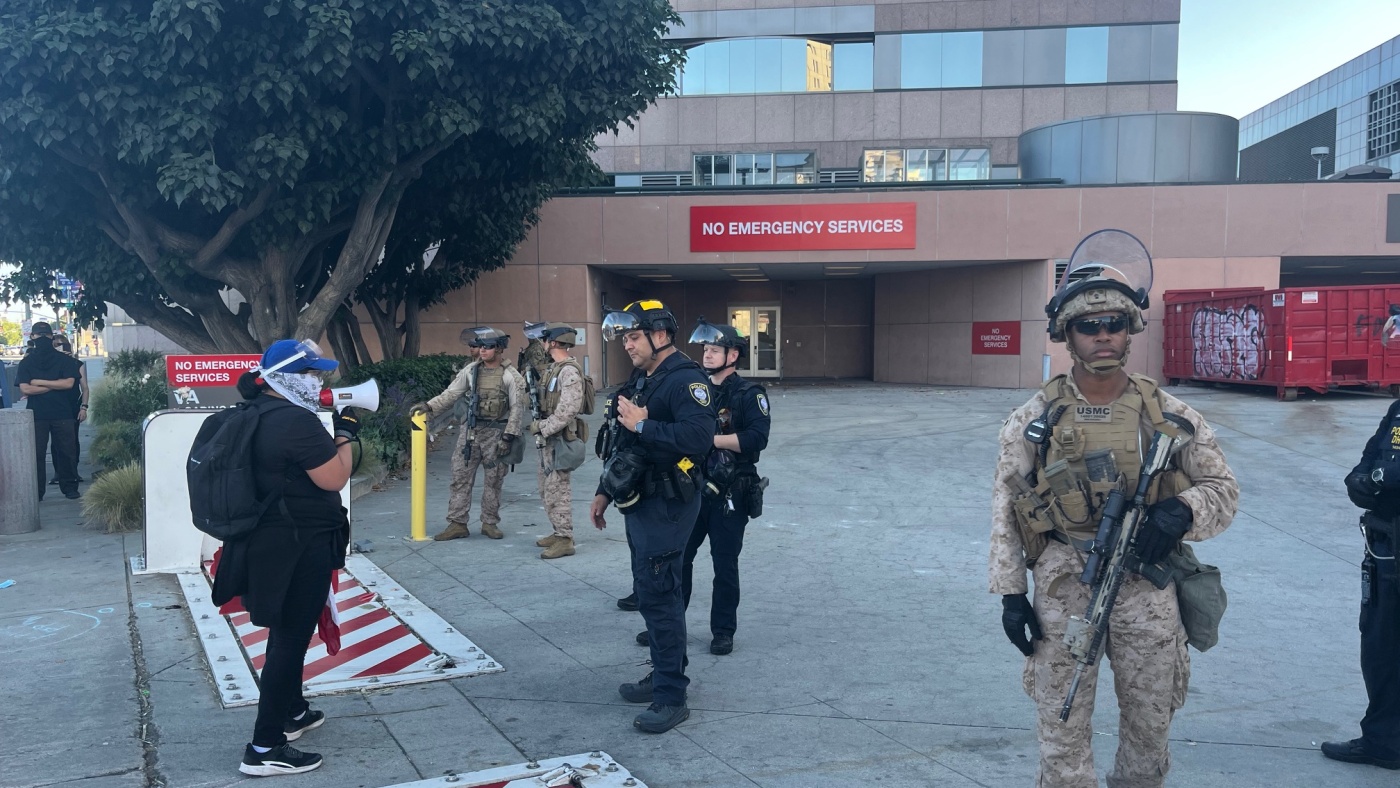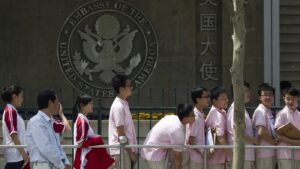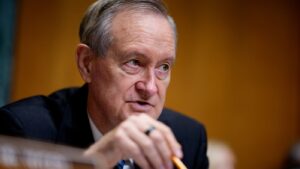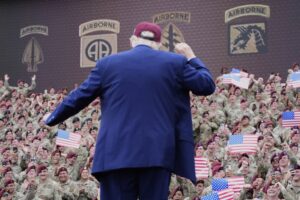Heightened Tensions in Los Angeles: National Guard Deployment Sparks Controversy
In a move that has stirred considerable debate, President Trump’s decision to deploy over 4,000 National Guard troops to Los Angeles is now under scrutiny in a San Francisco federal appeals court. The Trump Administration is appealing to maintain the federal control of these troops, countering a lower court’s decision that mandated their return to California Governor Gavin Newsom’s authority.
Governor Newsom has criticized the deployment, calling it an excessive measure in response to the protests against immigration policies. Alongside the Guard, an additional 700 Marines were also dispatched, a decision Newsom argues is counter-productive.
As the legal battle unfolds, the raids by Immigration and Customs Enforcement (ICE) that sparked the demonstrations have ramped up in intensity. Vlad Carrasco of the immigrant advocacy group CHIRLA notes a shift in ICE’s tactics, stating, “Operations are getting a little bit more faster, and they’re in and out.” Carrasco explains that the rapid nature of these operations now often leaves him unable to arrive in time to document the raids.
Videos shared by advocacy groups depict confrontations between civilians and immigration officers. These situations sometimes involve National Guard soldiers forming lines to separate agents from the public. However, the more common tactic noted by observers is the speed of the operations.
The presence of officers in plain clothes and sometimes masked, wearing insignia of various federal agencies, has contributed to a climate of fear. Guillermo Torres from Clergy and Laity United for Economic Justice comments, “It makes you think of a totalitarian regime… a country where people are kidnapped.”
The Trump administration attributes the necessity of these raids to the “sanctuary” policies of Los Angeles and California, which limit local law enforcement’s cooperation with federal immigration authorities. Officials argue these policies force federal agents into potentially hazardous neighborhood arrests instead of taking custody of individuals from local jails.
Homeland Security Secretary Kristi Noem expressed frustration, stating, “These operations have been much more difficult because of Los Angeles’ and California’s sanctuary policies.” In light of threats against agents and their families, acting ICE director Todd Lyons defends the need for agents to wear masks.
The deployment of various federal agencies to support immigration enforcement has exacerbated anxiety levels in Los Angeles, according to Oscar Zarate of CHIRLA. The involvement of Homeland Security Investigations, Customs and Border Protection, and the Drug Enforcement Administration has made it challenging for the public to distinguish between federal and local law enforcement.
Confusion may soon be mitigated due to a class action lawsuit filed by the ACLU of Southern California, which challenges ICE’s alleged use of deceptive tactics. A settlement currently under preliminary approval would require ICE personnel in Los Angeles to wear more prominent identification, reducing misidentification during operations.
Stephanie Padilla from the ACLU of Southern California emphasizes the importance of visible identifiers, suggesting it will help alleviate public confusion. However, the settlement’s impact may be limited as it applies solely to ICE, leaving personnel from other federal agencies unaffected.
This article was originally written by www.npr.org







Be First to Comment